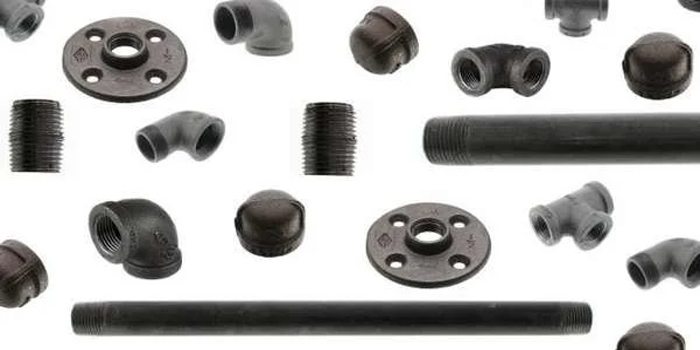45-degree structural pipe connectors play a crucial role in enhancing overall system efficiency in various applications, including construction, industrial, and DIY projects.
Here are several ways in which these connectors contribute to efficiency:
- Optimized Flow: By allowing pipes to be connected at a 45-degree angle, these connectors facilitate smoother and more efficient flow of fluids or gases through the piping system. The angled connection minimizes resistance and pressure drops, improving the overall flow rate and performance of the system.
- Space Optimization: 45-degree structural pipe connectors enable pipes to be joined at intermediate angles, allowing for more efficient use of space in tight or confined areas. This can be particularly beneficial in construction projects where space is limited or in industrial settings where equipment layout is critical.
- Flexibility in Design: The use of 45-degree connectors provides greater flexibility in system design, allowing engineers and designers to create custom configurations that meet specific project requirements. This flexibility enables the optimization of system layout and functionality, leading to improved efficiency and performance.
- Reduced Installation Time: These connectors simplify the installation process by allowing pipes to be connected at preset angles without the need for complex cutting or welding. This reduces assembly time and labor costs, resulting in faster project completion and increased overall efficiency.
- Enhanced Structural Integrity: 45-degree structural pipe connectors contribute to the structural integrity of the piping system by providing stable and secure connections at intermediate angles. This helps prevent leaks, failures, and system downtime, 45 degree structural pipe connector ensuring reliable operation and minimizing maintenance requirements.
- Cost Savings: By streamlining the installation process, reducing material waste, and optimizing system performance, the use of 45-degree connectors can result in significant cost savings over the life of the project. These cost savings may include reduced labor costs, lower material expenses, and decreased energy consumption.
- Improved Aesthetics: In addition to their functional benefits, 45-degree structural pipe connectors can also enhance the aesthetics of the piping system by providing clean, seamless transitions between pipes. This can be particularly important in architectural or design-driven projects where visual appeal is a priority.
Overall, 45-degree structural pipe connectors play a vital role in enhancing overall system efficiency by optimizing flow, space utilization, design flexibility, and installation time. Their use results in cost savings, improved structural integrity, and enhanced system performance, making them indispensable components in a wide range of applications.
How do you properly install and connect 90 degree structural pipe connector?
Proper installation and connection of 90-degree structural pipe connectors are essential to ensure the integrity and stability of the piping system. Here are step-by-step instructions for installing and connecting these connectors:
- Prepare the Pipes: Start by preparing the pipes that will be connected using the 90-degree structural pipe connector. Ensure that the ends of the pipes are clean, smooth, and free from any burrs, debris, or irregularities that could interfere with the connection.
- Select the Connector: Choose the appropriate size and type of 90-degree structural pipe connector for the application. Ensure that the connector is compatible with the size and material of the pipes being used.
- Position the Connector: Position the connector at the desired location along the length of the pipes, ensuring that it aligns correctly with the orientation of the pipes and the angle of the connection.
- Mark the Pipes: Use a marker or pencil to mark the insertion depth on each pipe, indicating how far the pipes should be inserted into the connector to achieve a secure and stable connection.
- Apply Lubricant: Apply a small amount of pipe joint lubricant or thread sealant to the male threads of the connector. This will help facilitate the insertion of the pipes and create a tight, leak-proof seal.
- Insert the Pipes: Insert the ends of the pipes into the openings of the connector, making sure to align them with the insertion depth marks previously made. Apply gentle pressure to push the pipes fully into the connector until they reach the marked depth.
- Tighten the Connection: Once the pipes are fully inserted into the connector, use a wrench or pipe wrench to tighten the connection securely. Be careful not to over-tighten, as this could damage the pipes or connector.
- Check for Leaks: After the connection is tightened, inspect the joint for any signs of leaks or seepage. 90 degree structural pipe connector Test the connection by running water or air through the pipes and checking for any leaks. If necessary, re-tighten the connection or apply additional sealant to ensure a tight seal.
- Secure the Pipes: Once the connection is secure and leak-free, use pipe straps or clamps to secure the pipes in place and prevent them from moving or shifting.
- Repeat if Necessary: If connecting multiple pipes using multiple connectors, repeat the installation process for each connection, ensuring that each one is properly aligned, inserted, and tightened.
By following these steps, you can properly install and connect 90-degree structural pipe connectors, ensuring a secure, stable, and leak-free connection for your piping system. It’s essential to take your time and pay attention to detail to achieve optimal results and prevent potential issues down the line.
